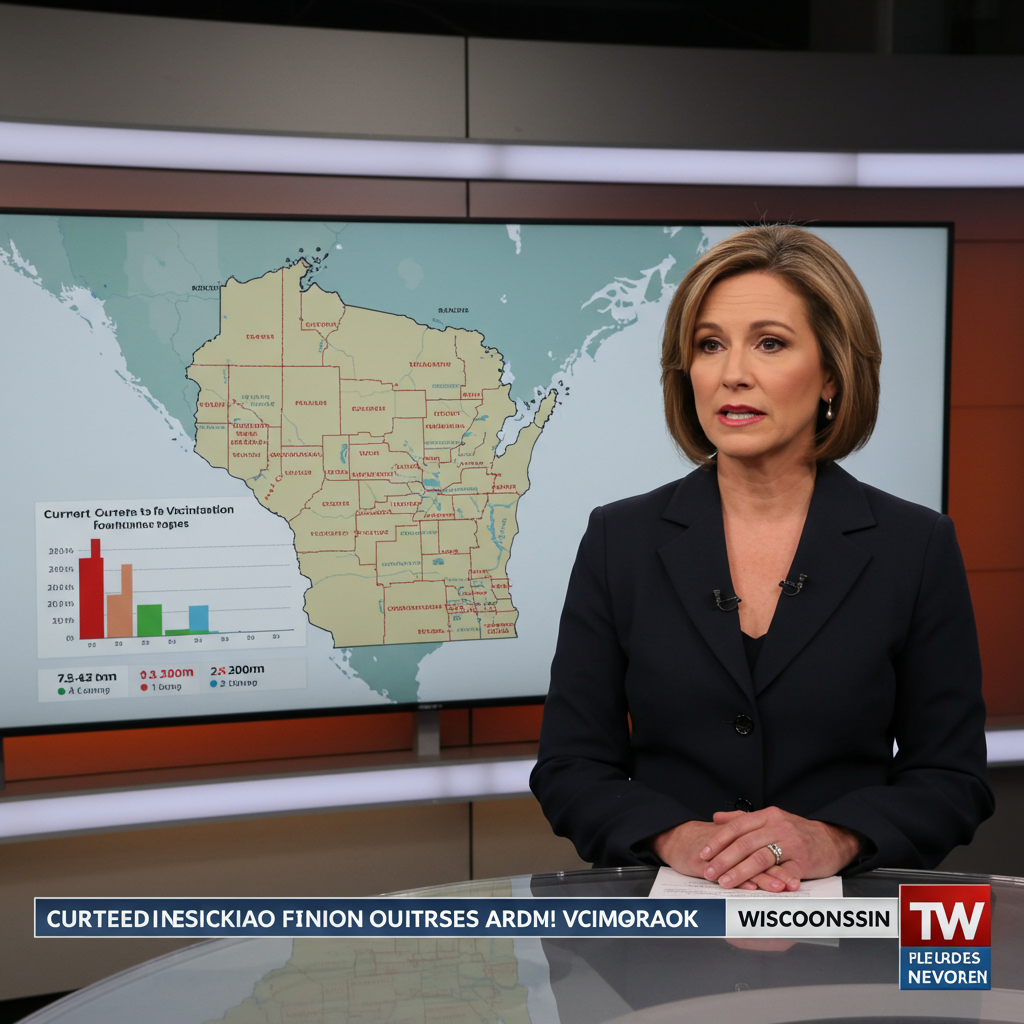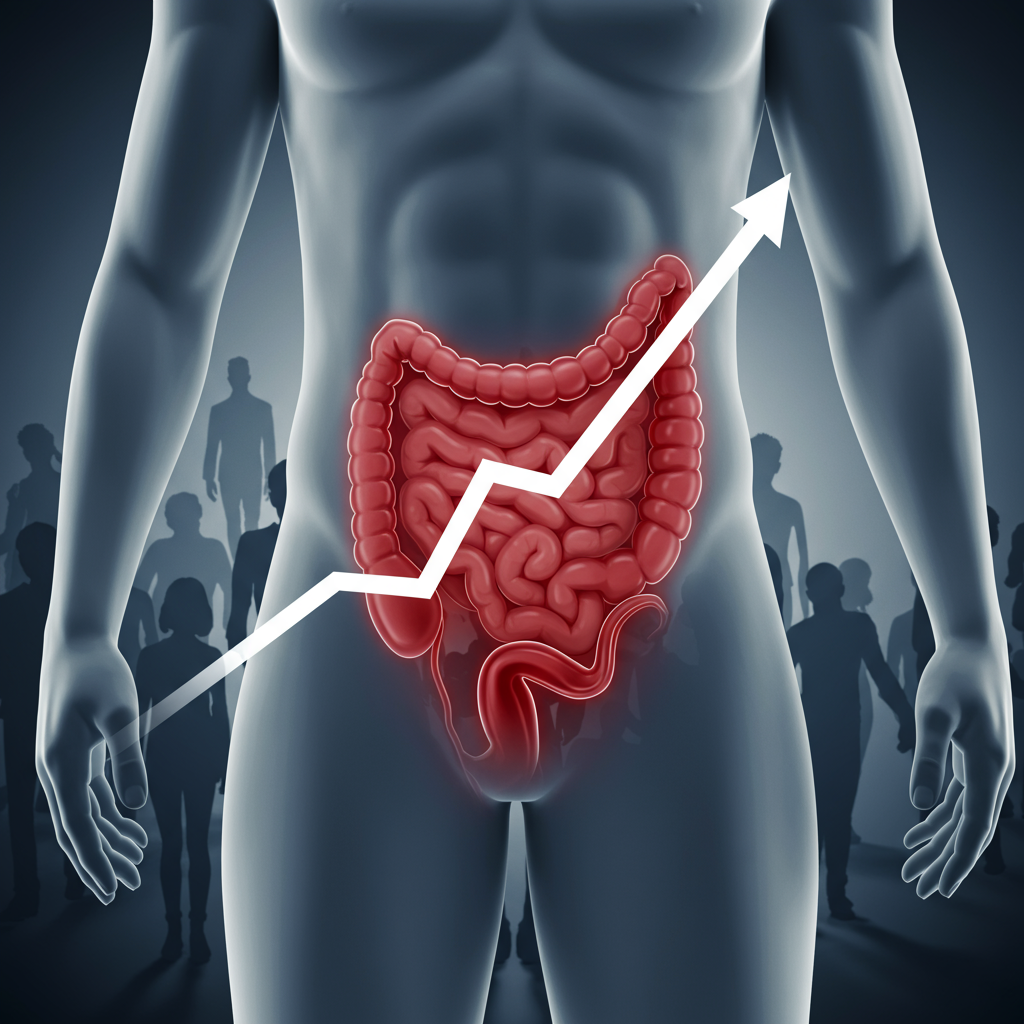Wisconsin is facing a critical public health alert as nine measles cases have been confirmed in Oconto County, marking the state’s first reported instances of the highly contagious disease in 2025. These new developments underscore growing concerns among health officials regarding declining vaccination rates and the increasing risk of outbreaks. Understanding the current situation, measles symptoms, and the crucial role of vaccination is vital for protecting yourself and your community. This guide offers essential insights into the Oconto County cases, the broader context of measles resurgence, and actionable steps you can take to stay safe.
Understanding the Outbreak in Oconto County
The confirmation of nine measles cases in Oconto County signals an important moment for public health in Wisconsin. This cluster represents the state’s initial encounters with the virus for the year, prompting immediate action from health authorities.
First Cases of 2025
On August 2, 2025, the Wisconsin Department of Health Services (DHS) and Oconto County Public Health confirmed these nine cases. The first case was precisely identified through comprehensive laboratory testing at the Wisconsin State Laboratory of Hygiene. Subsequently, the remaining eight cases were confirmed based on their characteristic symptoms and established links to the initial exposure. This rapid identification process is crucial for containing the spread of such a highly transmissible virus.
The Source: Out-of-State Travel
Health investigations have definitively traced the source of exposure for all nine confirmed individuals to a single, common event that occurred during out-of-state travel. This key finding is significant. It indicates that the virus was introduced from outside Wisconsin, rather than originating from within the local community. Consequently, health officials currently assess the immediate risk to the broader Oconto County community as low. Despite this, authorities are diligently working to identify and notify anyone who may have come into contact with these confirmed cases. No public points of exposure within Wisconsin have been identified from these specific cases, as officials emphasize privacy laws limit further case details.
What is Measles? Symptoms and Transmission
Measles is more than just a common childhood illness. It is a serious viral infection with potentially severe complications. Its highly contagious nature makes rapid spread a significant concern in under-vaccinated populations.
Recognizing Measles Symptoms
Symptoms of measles typically emerge 10 to 21 days after exposure to the virus. Early signs often mimic a common cold, but a distinctive rash soon follows.
Key symptoms include:
A high fever
Runny nose
Persistent cough
Red and watery eyes
- A characteristic red rash with raised bumps, usually appearing first at the hairline and then spreading to the arms and legs
- www.wpr.org
- www.jsonline.com
- www.fox9.com
- www.yahoo.com
- www.wbay.com
It is critical to contact a healthcare provider immediately if you or someone you know develops these symptoms, especially if there’s a history of travel or potential exposure.
How Measles Spreads
Measles spreads with alarming efficiency. The virus transmits from person to person through the air, primarily via respiratory droplets from coughing or sneezing. The virus can remain airborne for up to two hours after an infected person has left a room, making it incredibly easy to contract. Alarmingly, up to 90 percent of unvaccinated individuals who are exposed to someone with measles will contract the disease. This high transmission rate underscores the importance of robust community immunity.
The Severity of Measles
While often perceived as a benign childhood illness, measles can lead to severe health outcomes. Statistics from the DHS reveal that approximately one in four people who contract measles can end up hospitalized. Nationally, measles has led to 169 hospitalizations and three deaths so far this year. Complications can include pneumonia, encephalitis (brain swelling), and even death. These serious risks far outweigh the minimal risks associated with vaccination.
Wisconsin’s Vulnerability: Low Vaccination Rates
The appearance of measles cases in Wisconsin highlights a concerning trend. The state’s vaccination rates, particularly among young children, fall significantly below national averages, creating a fertile ground for outbreaks.
A National Concern
For several years, public health officials have been sounding alarms about a nationwide decline in measles vaccination rates. This trend is particularly worrying for school-aged children. Wisconsin stands out as having one of the nation’s lowest measles vaccination rates for kindergartners. During the last school year, less than 85% of Wisconsin kindergartners were up-to-date on their measles vaccine. This figure starkly contrasts with the nearly 93% national average for kindergartners. Only Idaho and Alaska reported lower measles vaccination rates among states with available data, positioning Wisconsin as highly vulnerable.
The Importance of Herd Immunity
The low vaccination coverage in Wisconsin directly impacts the concept of “herd immunity.” This crucial public health principle describes how a high percentage of vaccinated individuals protects the entire community, including those who cannot be vaccinated due to age or medical conditions. For measles, experts like Malia Jones, an assistant professor at the University of Wisconsin-Madison, emphasize that 95% to 98% vaccination coverage is essential to achieve effective herd immunity. Wisconsin is currently “well below” this critical threshold in many areas, significantly increasing the risk of widespread disease transmission. This vulnerability had prompted state health officials to issue warnings earlier this year about a potential measles outbreak, drawing parallels to a significant outbreak that occurred in Texas.
Protecting Yourself and Your Community
Taking proactive steps is crucial to prevent further spread of measles and safeguard public health. Vaccination remains the most effective defense against this highly contagious disease.
The Power of the MMR Vaccine
The Measles, Mumps, and Rubella (MMR) vaccine is the cornerstone of measles prevention. Two doses of the MMR vaccine are remarkably effective, providing 97% protection against the disease. The standard vaccination schedule involves a first dose between 12 and 15 months of age, followed by a second dose between ages four and six. However, new guidance in Wisconsin now allows the MMR booster shot to be administered as early as one month after the first dose. For individuals planning international travel or visiting areas experiencing an outbreak, infants aged 6 to 12 months may receive an early dose of the MMR vaccine if they are at high risk. Generally, individuals born before 1957 are considered immune and may not require vaccination. However, all other adults lacking laboratory evidence of immunity should receive at least one dose.
Checking Your Vaccination Status
It is important to know your vaccination status to protect yourself and others. Wisconsin residents can easily check their immunization records by visiting the Wisconsin Immunization Registry online. If you are not up-to-date on your MMR vaccine, health officials strongly advise getting vaccinated promptly. This simple step can significantly reduce your personal risk and contribute to the overall health of your community.
When to Seek Medical Attention
If you develop symptoms consistent with measles, it is vital to take immediate and cautious action to prevent further transmission. Stay home and call your local doctor or clinic before visiting in person. This pre-emptive phone call allows healthcare providers to take necessary precautions and guide you through the safest path to diagnosis and treatment, minimizing exposure risks to others in the clinic or hospital setting.
Wider Context: Measles Resurgence
The Oconto County cases are not isolated incidents. They are part of a broader national and global resurgence of measles, driven largely by declining vaccination rates and increased international travel.
National Trends and Alarms
Measles cases across the United States have reached their highest number in 33 years, according to NPR. This alarming statistic, highlighted by a broader health alert from the Centers for Disease Control and Prevention (CDC), provides critical context for Wisconsin’s situation. The nationwide uptick underscores the urgent need for widespread vaccination efforts to curb this preventable disease. The vulnerability of under-vaccinated communities to imported cases is now a palpable reality across the country.
Regional Impact
Wisconsin’s geographic position further highlights its risk. By early July, all of its neighboring states—Michigan, Illinois, Iowa, and Minnesota—had already confirmed measles cases. This regional spread illustrates how easily the virus can cross borders, especially with out-of-state travel acting as a common source of exposure. The confirmed cases in surrounding areas increase the likelihood of future introductions into Wisconsin, making high local vaccination rates even more critical for sustained protection. The combination of low in-state vaccination coverage and rising regional cases creates a challenging public health landscape.
Frequently Asked Questions
What are the typical symptoms of measles and how does it spread?
Measles typically begins with a high fever, runny nose, cough, and red, watery eyes. A characteristic red rash with bumps usually appears a few days later, starting at the hairline and spreading downwards. Measles is extremely contagious, spreading through the air when an infected person coughs or sneezes. The virus can remain airborne for up to two hours, making it easy to contract, especially for unvaccinated individuals, where up to 90% exposed may get the disease.
How can Wisconsin residents check their measles vaccination status?
Wisconsin residents can easily check their measles vaccination status by accessing the Wisconsin Immunization Registry online. This registry provides a comprehensive record of an individual’s immunizations. If records indicate you are not up-to-date on your Measles, Mumps, and Rubella (MMR) vaccine, health officials strongly recommend getting vaccinated to ensure protection against this highly contagious disease.
When should I consider getting the MMR vaccine or a booster?
Most children receive their first MMR dose between 12-15 months and a second between 4-6 years. However, adults without documented immunity should get at least one dose. For travelers to international destinations or U.S. outbreak areas, infants 6-12 months can receive an early MMR dose if at high risk. Wisconsin also allows an MMR booster as early as one month after the first dose. Consult your doctor if unsure about your vaccination needs, especially before travel.
Conclusion
The confirmation of measles cases in Oconto County serves as a stark reminder of the enduring threat posed by vaccine-preventable diseases. While the immediate risk to the community is assessed as low due to the out-of-state travel origin, Wisconsin’s low vaccination rates present a significant underlying vulnerability. Understanding measles symptoms, its highly contagious nature, and the critical role of the MMR vaccine is paramount. By checking vaccination statuses, getting vaccinated, and seeking medical attention responsibly, individuals can play a vital role in protecting themselves and contributing to the collective health of Wisconsin.




